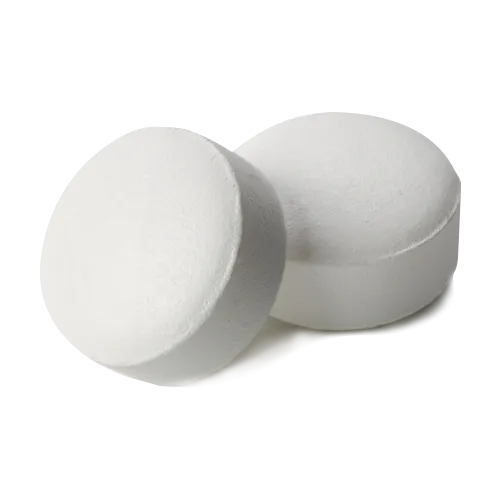Overview
Risperdal, generically known as risperidone, is an atypical antipsychotic medication used to treat schizophrenia, bipolar disorder, and irritability associated with autism. It works by balancing dopamine and serotonin levels in the brain to improve mood, behavior, and thinking. Available in tablets, orally disintegrating tablets, oral solution, and injectable forms, Risperdal offers versatile administration options for various patient needs.
History of Development and Approval
Developed by Janssen Pharmaceuticals, Risperdal was approved by the FDA in 1993 for schizophrenia, with later approvals for bipolar mania in 2003 and autism-related irritability in 2006. Its efficacy and safety profile have made it a widely used antipsychotic, supported by extensive clinical trials.
Key Benefits
- Symptom Management: Effectively reduces hallucinations, delusions, and mood swings.
- Behavioral Improvement: Alleviates irritability and aggression in autism.
- Flexible Forms: Multiple administration options enhance compliance.
- Long-Acting Injectable: Provides sustained release for consistent therapy.
Unique Properties
Risperdal’s dual antagonism of dopamine D2 and serotonin 5-HT2A receptors provides effective symptom control with a lower risk of extrapyramidal side effects compared to typical antipsychotics. Its long-acting injectable form supports maintenance therapy for non-adherent patients.
Comparison with Similar Medications
Compared to other atypicals, Risperdal offers:
- Balanced Receptor Profile: Effective for positive and negative symptoms with fewer metabolic side effects.
- Pediatric Indications: Approved for autism-related irritability in children.
- Injectable Option: Long-acting form for improved adherence compared to oral-only alternatives.
Safety and Tolerability
Risperdal is generally well-tolerated, with common side effects including weight gain, drowsiness, and increased appetite. Rare serious effects, such as tardive dyskinesia, neuroleptic malignant syndrome, or metabolic changes, require monitoring. Regular healthcare provider oversight ensures safe use.
Indications for Use
Risperdal is indicated for:
- Schizophrenia: In adults and adolescents (13–17 years).
- Bipolar Mania: Acute manic or mixed episodes in adults, adolescents (10–17 years), and as maintenance therapy.
- Autism-Related Irritability: In children and adolescents (5–17 years).
Dosage and Administration
Adults (Schizophrenia): Start 2 mg/day, titrate to 4–8 mg/day. Bipolar: 2–3 mg/day, up to 6 mg/day.
Children/Adolescents: Autism: 0.25–0.5 mg/day, titrate to 1–3 mg/day. Schizophrenia/Bipolar: Weight-based, start low.
Elderly: Start 0.5–1 mg/day, titrate cautiously.
Timing: With/without food, consistent schedule.
Notes: Gradual titration reduces side effects; injectable for long-term use.
Mechanism of Action
Risperidone antagonizes dopamine D2 and serotonin 5-HT2A receptors, balancing neurotransmitter activity to reduce psychotic symptoms, stabilize mood, and alleviate behavioral issues.
Composition
Active Ingredient: Risperidone, drives antipsychotic effects.
Inactive Ingredients: Tablets: lactose, cellulose; solution: sorbitol; injectable: polylactide-co-glycolide for stability.
Side Effects
Common: Weight gain, drowsiness, increased appetite, dizziness.
Rare: Tremors, restlessness.
Serious: Tardive dyskinesia, neuroleptic malignant syndrome, metabolic syndrome require urgent care.
Prevention of Side Effects
Use lowest effective dose, monitor weight and metabolic parameters, report movement disorders or mood changes promptly.
Contraindications
Avoid in hypersensitivity to risperidone or dementia-related psychosis (increased mortality risk).
Warnings and Precautions
Monitor for tardive dyskinesia, metabolic changes, or neuroleptic malignant syndrome. Caution in elderly, cardiovascular disease, or seizure history.
Drug Interactions
CYP2D6 inhibitors (e.g., fluoxetine) increase risperidone levels; carbamazepine reduces efficacy. Disclose all medications.
Overdose
Symptoms: drowsiness, tachycardia, hypotension. Seek emergency care immediately.
Pharmacokinetics
Absorption: Well-absorbed, peak 1 hour.
Distribution: Protein-bound, widely distributed.
Metabolism: Liver via CYP2D6 to active metabolite.
Elimination: Urine (70%), feces (14%); half-life 3–20 hours (varies by metabolizer status).
Dosage Forms
Tablets (0.25, 0.5, 1, 2, 3, 4 mg), orally disintegrating tablets (0.5, 1, 2, 3, 4 mg), oral solution (1 mg/mL), long-acting injectable (12.5, 25, 37.5, 50 mg) for flexible administration.
Pregnancy and Breastfeeding
Use if benefits outweigh risks (Category C); excreted in milk, consult provider for breastfeeding.
Storage
Store at 20°C–25°C (68°F–77°F), dry, light-protected, away from children. Dispose expired properly.
Clinical Evidence
Trials confirm Risperdal’s efficacy in reducing psychotic symptoms in schizophrenia, manic episodes in bipolar disorder, and irritability in autism, with sustained benefits.
Conclusion
Risperdal is a versatile atypical antipsychotic for schizophrenia, bipolar disorder, and autism-related irritability, offering effective symptom control and flexible forms. Adhere to dosing, monitor side effects, and consult providers for optimal outcomes.




